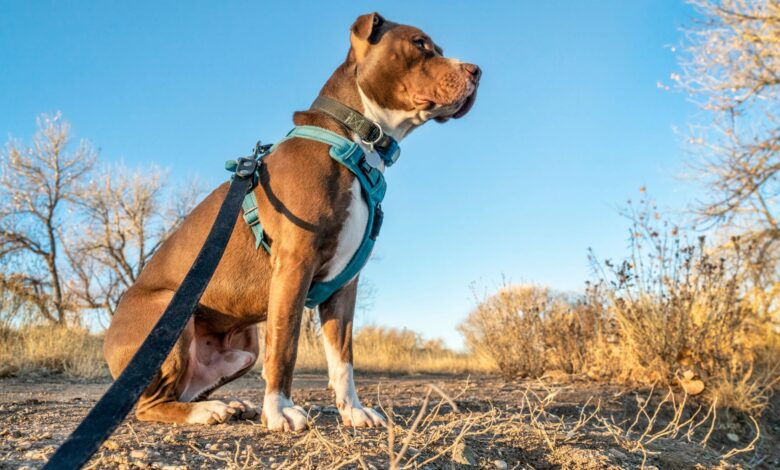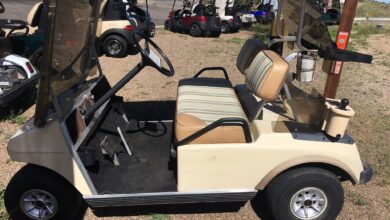Step Up Your Walking Game: Choosing Modern Dog Harnesses Designed for Large Breeds

In the realm of canine care, the harness has revolutionized how we ensure the safety and well-being of our large breed dogs. Modern harnesses offer a safe, pressure-distributing accessory that ensures optimal comfort and protection for walks and active play. They are made with the physical structure of the animal in mind. Particularly, harnesses like the ones found among the best dog harnesses for large dogs are tailored to cater to the diverse needs of larger canines, providing owners with the peace of mind that their pets are well-supported. Understanding the evolution of these crucial pet accessories is beneficial for any responsible large dog owner. The design intricacies of modern dog harnesses have been informed by a rich history, robust research, and innovative technologies, all aiming to enhance the quality of life of our beloved pets. As such, this article delves into the comprehensive nature of current harness offerings and why they are a game-changer in the large breed dog community.
The Historical Journey from Collars to Harnesses
The history of dog leashes and collars is as old as that of domestic dogs. Initially, collars were simply a means of controlling dogs and asserting ownership. However, as our understanding of canine anatomy and behavior has advanced, so has the evolution of dog-walking gear. Early collars often concentrated pressure on a dog’s throat, especially in the case of a large, strong dog, leading to potential tracheal damage and breathing problems. The best dog harness for large dogs testifies to the pursuit of optimal canine wellness. They lessen the strain on the neck and provide a safer, more compassionate method of guiding and controlling animals by applying equal pressure to the dog’s chest and back.
Analyzing the Anatomy of Large Breed Dogs
Large breed dogs—a classification that typically includes canines weighing over 50 pounds—possess distinct physical characteristics requiring specialized care. Their considerable size and strength mean that their skeletal structure endures more stress, particularly during walks where pulling or lunging can exacerbate joint and muscle strain. An optimally designed harness for a large breed dog considers these factors by providing a supportive structure that accommodates their larger frame, preventing the potential for injury and discomfort. For those seeking further insight into the nuanced anatomy of large breeds, educational resources provided by reputable organizations can be incredibly useful in understanding the complex physical composition of these animals.
The Integration of Technology in Dog Harness Design
The pet accessory industry has been included in the tech revolution. The intersection of technology with dog harness design has led to products that serve more functions than simply restraint and control. These modern harnesses often incorporate durable, lightweight materials for comfort. At the same time, some even include integrated GPS trackers or activity monitors to keep a digital eye on your pet’s location and health metrics. This technological integration caters to the dog’s immediate safety and paves the way for a proactive approach to monitoring their overall wellness.
The Importance of Proper Harness Fit and Adjustment
A harness that fits well is imperative for the comfort and safety of your dog. An ill-fitting harness can lead to chafing, escape, or even injury. Knowing how to correctly measure your dog and fit the harness to its specific size and shape is essential to getting the ideal fit. A snug fit should allow two fingers to slip through between the harness and the dog’s body, providing room for movement without excess slack. Owners must also consider the adjustability of the harness, ensuring that it can accommodate their dog’s growth or any weight fluctuations.
Harnesses and Canine Health: A Veterinary Perspective
Veterinarians highlight the connection between the type of harness used and the dog’s overall health, especially for larger breeds with inherent risk factors for hip dysplasia or other joint ailments. A well-constructed harness transcends mere convenience; it is necessary for preventing long-term health issues. Pet medical professionals often provide valuable advice regarding the ideal type of support your large breed dog may need to maintain an active, pain-free lifestyle. For a deeper dive into how accessories can affect the health and wellness of pets, comprehensive guides are insightful resources that convey the importance of selecting proper gear for our canine companions.
Maximizing Mobility with Ergonomic Harness Designs
Ergonomics, the study of designing equipment that fits the user’s body, minimizes discomfort and maximizes efficiency, is vitally important when creating harnesses for dogs,
giant breeds susceptible to mobility issues. An ergonomically sound harness will align with the animal’s natural movements, thus preventing unnatural strain on their bodies. The focus on ergonomic design has led to the development of harnesses with features such as padded straps, adjustable points, and breathable materials—all aimed at enhancing the overall well-being of dogs during their daily activities.
The Use of Harnesses in Canine Physical Therapy
Many large breed dogs, especially those in their senior years, often require physical therapy to manage ailments or recover from surgery. In such cases, a supportive harness can be an invaluable asset. In physical therapy, harnesses can assist by providing support for weight-bearing exercises and helping to guide dogs through movements that strengthen muscles and improve joint health. This targeted use of harnesses highlights the versatility of these products beyond mere walking, encompassing broader elements of health care and rehabilitation.
Training Benefits of Proper Harness Use
Large-breed dogs are powerful creatures; an excellent harness can significantly impact training. The correct harness can provide control without discomfort, making it a constructive tool for teaching good leash habits and obedience. It is not about subduing the dog but rather about fostering a supportive environment where the dog can learn and respond to commands without the potential for injury that traditional collars may present.
The Best Practices for Harness Maintenance and Care
Maintaining your dog’s harness is as crucial as choosing the right one. A regularly cleaned harness and checked for signs of wear are more likely to maintain its integrity and safety features. It means routinely inspecting the harness for any tears, frayed straps, or damaged buckles that could indicate it’s time for a replacement. By looking after your dog’s harness, you ensure its ongoing safety and comfort during use.
Choosing the Ideal Harness for Your Large Breed Dog
Choosing the ideal harness for your large breed dog should consider numerous factors, including age, temperament, and physical condition. It’s essential to assess the intended use, whether for leisurely walks, vigorous hikes, or skill training. Considering these aspects, dog owners can make enlightened choices that serve their pet’s interests, improving their quality of life and solidifying their bond.



